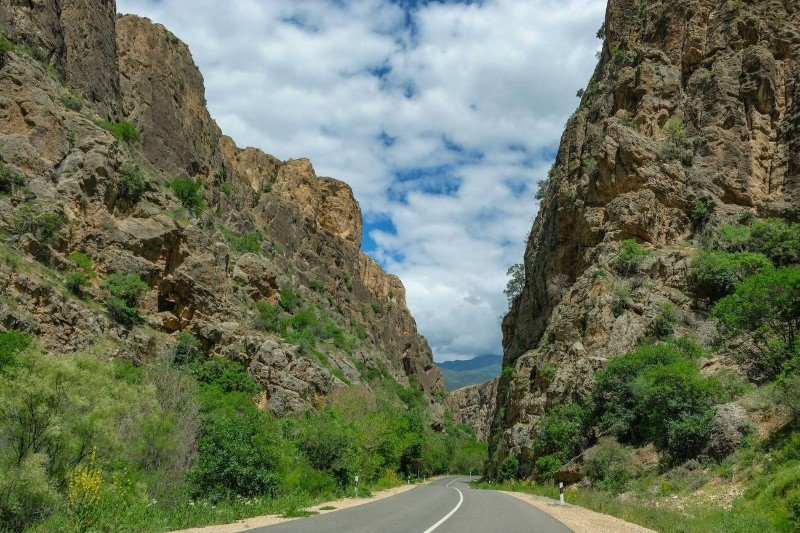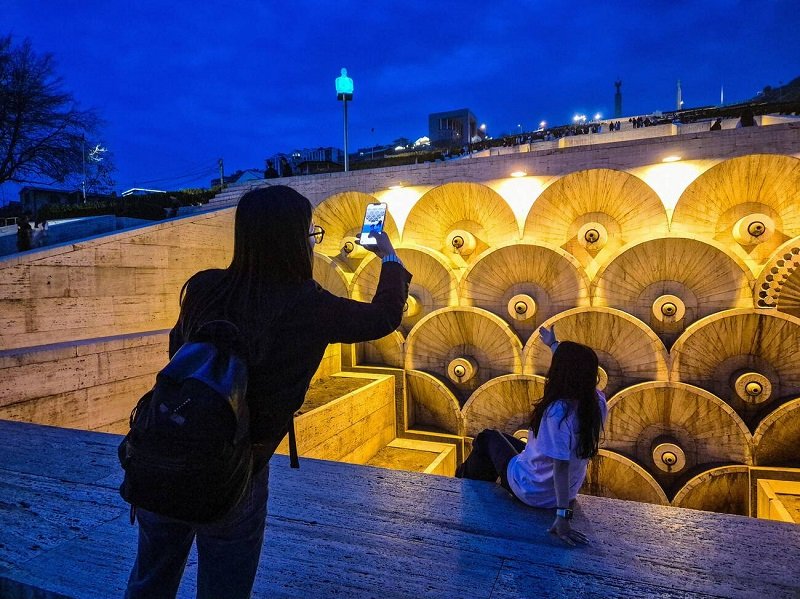The Dvin Ruins Armenia represent the remains of a city that served as the capital of Armenia between the 4th and 9th centuries. This historical site lies in the Ararat Province, about 35 kilometers south of Yerevan. It was once a thriving political, economic, and religious center.
With layers of structures, temples, streets, and fortifications, the site offers a direct view into medieval Armenian life. Excavations over the years have revealed foundations of churches, public buildings, and city walls.
Follow the Armenic Tours article to know more about the history, architecture, and significance of Dvin Ruins Armenia before planning your visit.
The Founding of Dvin

Dvin was founded in 336 AD by King Khosrov III. It quickly replaced Artashat as the kingdom’s capital due to its favorable location near key trade routes. The city was strategically built on a hill and surrounded by fertile land, making it ideal for agriculture and defense.
Dvin remained a capital city through the rule of several dynasties. It housed Armenian kings, noble families, and religious authorities. Its significance stretched across centuries as a hub of diplomacy, culture, and power.
Architectural Features at Dvin Ruins Armenia
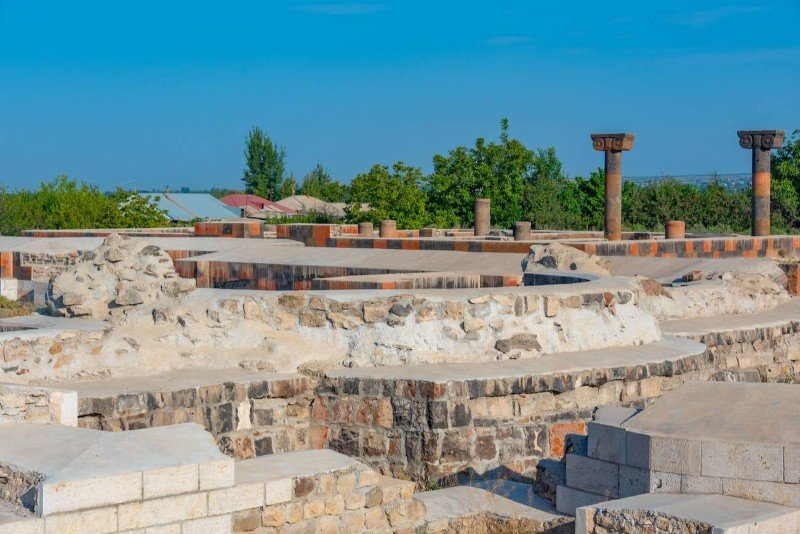
Visitors to the Dvin Ruins Armenia can observe the layout of a well-planned medieval city. Structures from different periods showcase a mix of public and religious buildings.
Key Architectural Remains:
- The Cathedral of St. Gregory: Built in the 5th century, it was one of the earliest Christian churches in Armenia. Its triple-nave design and foundations are still visible today.
- City Walls and Citadel: Defensive structures once protected the city from invasions. The citadel was likely used as a military post and royal residence.
- Urban Layout: Remnants of roads, markets, and housing units offer insight into daily life in the capital.
- Workshop and Craft Areas: Archaeologists found evidence of pottery-making and metalwork, confirming Dvin’s role as an economic center.
Religious Role of Dvin
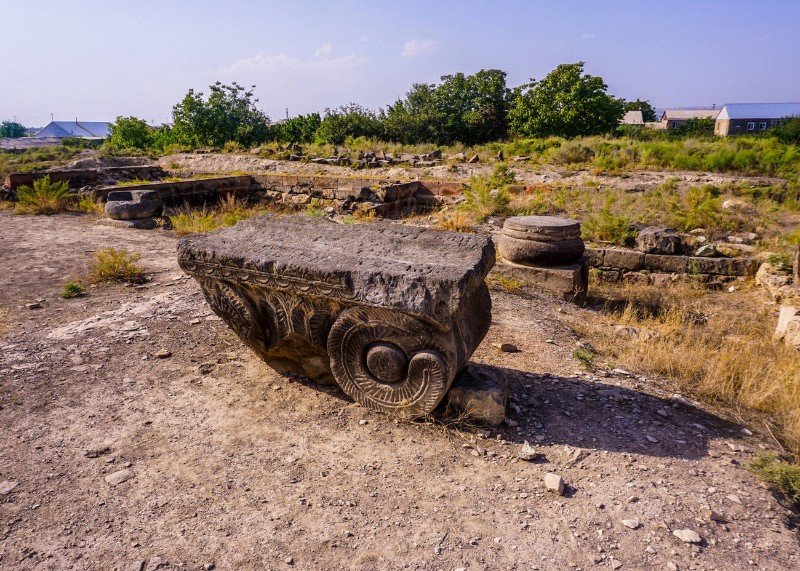
Dvin was more than just a capital, it was a spiritual center. The city became the seat of the Armenian Catholicos, the head of the Armenian Apostolic Church. Several church councils were held in Dvin, shaping Christian doctrine in the region.
The 645 AD Council of Dvin, for example, played a major role in defining Armenian church practices. The Cathedral of St. Gregory was the center of this religious activity.
Archaeological Discoveries
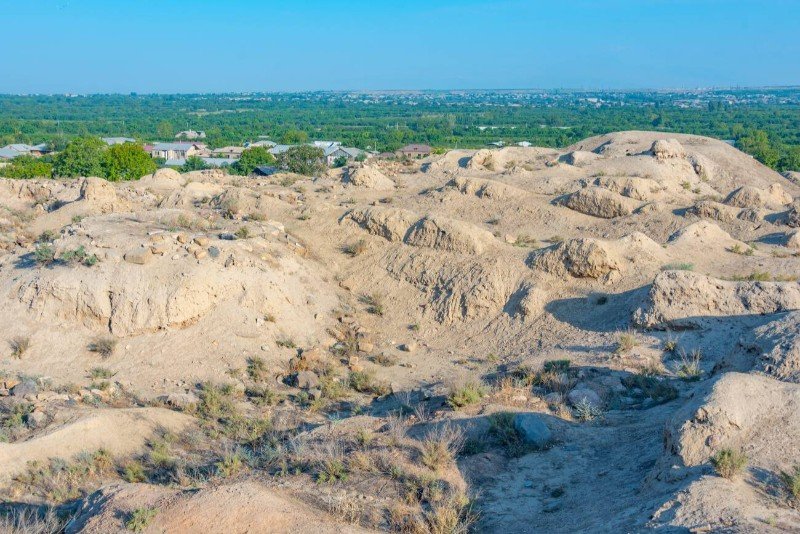
Excavations began in the mid-1900s and continue to this day. Archaeologists uncovered layered histories dating back to pre-Christian times. Items found include:
- Bronze and silver coins
- Clay pottery
- Inscriptions in Armenian and Arabic
- Stone crosses and religious symbols
- Underground canals and storage rooms
These findings are displayed in national museums and contribute greatly to the understanding of early Armenian urban life.
The Fall of Dvin
Dvin faced multiple invasions throughout its existence. The most devastating came in 640 AD, when Arab forces captured the city. Although Dvin continued under Arab control for some time, it eventually lost its importance.
A major earthquake in 893 AD destroyed much of the city. After that, Dvin never regained its former status. The ruins remained buried until modern archaeology brought them back into the spotlight.
Best Time to Visit Dvin Ruins Armenia

The best time to explore Dvin Ruins Armenia is between April and October. During this period, the weather is ideal for walking and sightseeing. Spring offers lush green surroundings, while autumn features comfortable temperatures and golden landscapes.
Visitors should wear comfortable footwear, carry water, and be ready for light hiking around the site. The area is not commercialized, which helps preserve its historical integrity.
Nearby Historical Sites

You can combine a visit to the Dvin Ruins Armenia with nearby landmarks for a full historical journey:
- Khor Virap Monastery: Known for its view of Mount Ararat
- Artashat Ruins: Remains of an older Armenian capital
- Garni Temple and Geghard Monastery: Located northeast of Dvin
These sites, along with Dvin, form a comprehensive route through Armenia’s early history.
How to Get to Dvin Ruins Armenia
Dvin Ruins Armenia are located near the village of Dvin in Ararat Province. From Yerevan, it’s an easy 45-minute drive.
Road conditions are generally good, and signage near the site is improving due to growing interest in Armenia’s historical landmarks.
Conclusion
The Dvin Ruins Armenia are a direct connection to a powerful and complex past. Once a royal capital, a religious center, and a bustling trade hub, Dvin now stands as a silent witness to centuries of Armenian civilization. For anyone passionate about history, architecture, or early Christianity, this ancient city offers a compelling reason to explore deeper into Armenia’s heritage.
FAQ
What is Dvin Ruins Armenia known for
Dvin Ruins Armenia is the site of an ancient capital that played a major role in Armenian history from the 4th to 9th centuries. It features church ruins, a citadel, and remnants of a thriving medieval city.
How can I get to Dvin Ruins Armenia from Yerevan
The site is located around 35 kilometers south of Yerevan and can be reached in about 45 minutes by car. Local maps and signs help guide visitors to the ruins.
When is the best time to visit Dvin Ruins Armenia
The ideal months are from April to October when the weather is pleasant for outdoor exploration and the surroundings are easily navigable.



